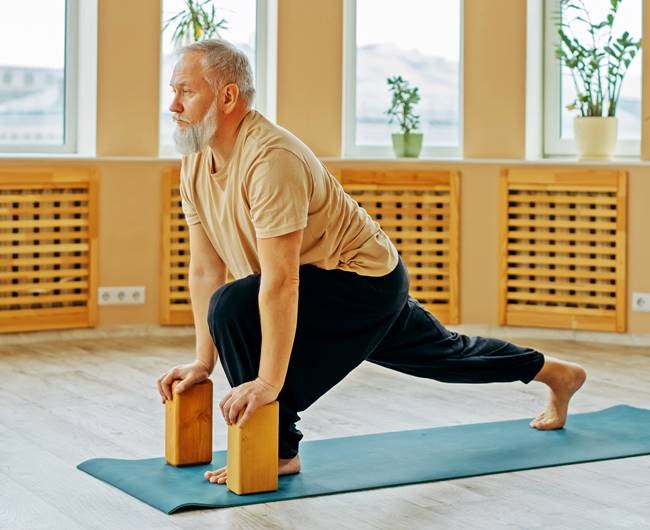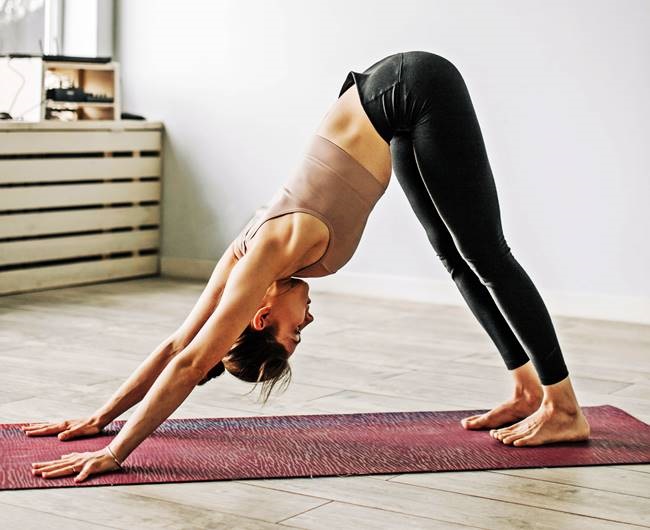- Iyengar yoga places a lot of focus on technique.
- This type of yoga is often recommended for beginners.
- The use of props in order to attain accurate posture is highly encouraged
Yoga is a discipline that originated in ancient India. It has a rich history and has come a long way, but has been considerably Westernised in the process.
While it is primarily a way of life, many people have concentrated on yoga as a form of exercise, and as a result of its popularity, numerous different styles have emerged.
Benefits
Bellur Krishnamachar Sundararaja Iyengar, better known as B.K.S. Iyengar, was the founder of this style of yoga.
Iyengar yoga is often recommended for students who are new to this art form.
Based on Hatha yoga, and practised according to the Yoga Sutras of Patanjali, this style places a lot of emphasis on correct posture when performing asanas (yoga poses).
Iyengar yoga builds strength, improves flexibility, and creates awareness of the body through the extended holding of the asanas, creating a particular focus on proper alignment.
Through consistency, students will become able to accurately perform yoga asanas, and develop balance and wellbeing – physically, mentally, and spiritually.
How to practise Iyengar yoga
The base of the Iyengar style of yoga is Hatha and, therefore, focuses on the more commonly known asanas.
The difference is that instead of concentrating on flow, Iyengar focuses on technique. So, when practising, make sure you are comfortable in the position you assume because you will need to hold the pose for a certain amount of time.
Should you need a prop or two to help you hold a pose, it is encouraged. Blocks, belts, bands, towels, rings, etc. are used until you no longer need them.
A seated pose, the Swastikasana is used to kick off your yoga session. It involves sitting with your legs crossed while your hands rest on your knees.
As far as the standing poses are concerned, the downward-facing dog, tree, and triangle poses are well known Hatha yoga asanas – and Iyengar yoga recommends that a student use as many different props as they need to help them attain the correct posture.
"Inverted poses" are recommended for slightly more advanced students, and first-timers may need to practise with a teacher or instructor, as many yoga-related injuries happen during the execution of these asanas.
Inverted poses are generally the poses where your head is below your heart and hips.
A popular inverted pose is Adho Mukha Svanasana, better known as downward-facing dog; it is useful for stretching and strengthening the glutes, hamstrings, quadriceps, upper back, shoulders, and arms.
Background
Iyengar's childhood was riddled with illnesses, some of them potentially deadly, and at one stage it was thought that he wouldn’t reach adulthood.
He, however, took up yoga and trained with his brother-in-law and guru Shriman Tirumalai Krishnamacarya in Mysore, India, and he became devoted to the discipline.
He learnt to execute his movements and asanas with great speed and fluidity, but Iyengar realised that practising yoga in this way was not only unsustainable, but also allowed for inaccuracy.
As he came to the realisation that he needed to slow down his movements, he began his in-depth study of the asanas. This happened while he taught yoga in the city of Pune.
After a few decades, Iyengar became an author, internationally known for his teachings and his own style of yoga.
As close to perfect as possible
His 1966 book Light on Yoga which details several benefits, along with a comprehensive guide on asanas, was translated into more than 20 languages.
Iyengar published more than 18 books, written many articles, given lectures and demonstrations, and conducted numerous interviews.
He was also a husband and father. His wife, Ramamani, was one of his first students and later became his assistant. Iyengar also taught his six children the art of yoga, two of whom subsequently became internationally renowned yoga teachers.
He went from swiftly moving through the asanas to slowing down to ensure that he and his students performed the poses as close to perfect as possible.
Iyengar yoga includes over 200 asanas and 14 pranayamas, and it is often used by beginners who are not accustomed to physical exertion.
Iyengar structured the asanas he used from basic to more advanced, so that teachers could instruct their students according to their individual needs.
READ | Four ways yoga can improve chronic health conditions
READ | The three safest ways to stretch tight hamstrings
READ | Five Simple yoga poses to improve your heaviest lifts




 Publications
Publications
 Partners
Partners













